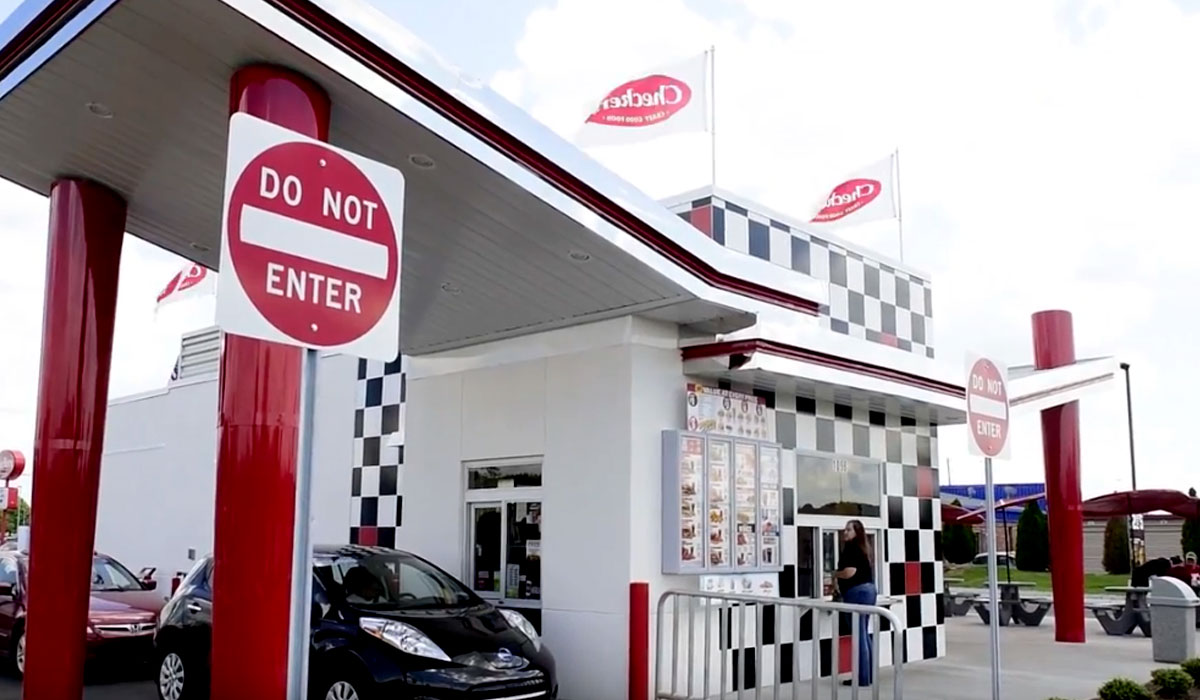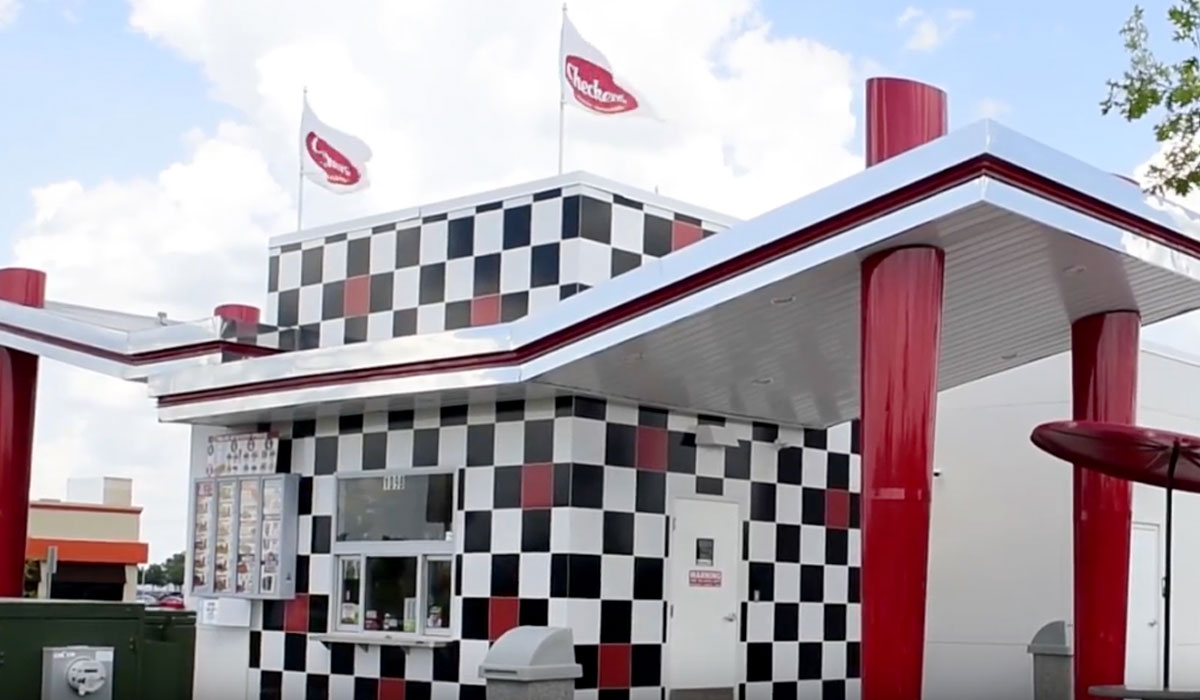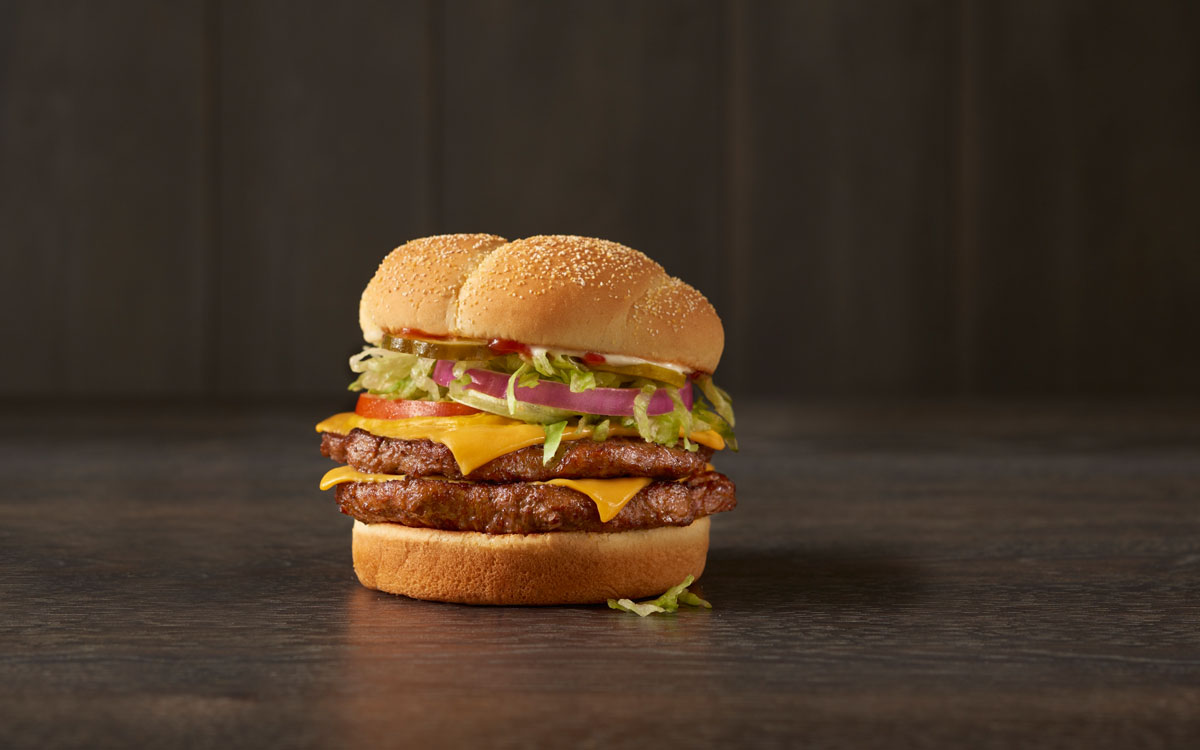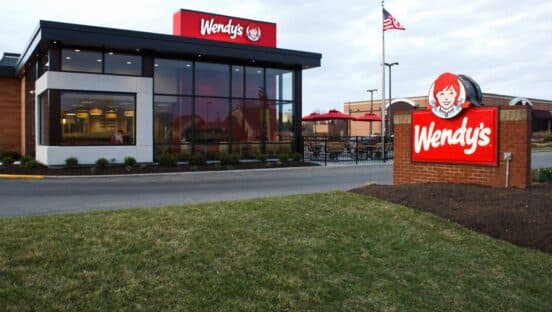Not so long ago, Checkers & Rally’s asked Buxton, a predictive analytics specialist, to measure its pulse in the marketplace. The company came back and stunned executives. Not including new markets, Buxton felt Checkers/Rally’s could add 3,000 additional units to the areas it already operates in. “It is kind of crazy if you think about it,” CEO Rick Silva told QSR in March.
Checkers Drive-In Restaurants isn’t tossing any darts at that growth map just yet. But the 870-unit brand, which was sold to Oak Hill Capital Partners for around $525 million last spring, does see 1,200 total units by 2020, at a pace of 100 per year, as a very reachable near-term goal.
READ MORE: Post sale, Checkers continues to gain momentum.
One key trigger for optimism: What senior vice president and chief development officer Jennifer Durham refers to as “the Amazon effect of building.”
Checkers & Rally’s plans to open about 70 restaurants this year. Thirty of those will be modular buildouts in line with its 4.0 design model (18 by summer’s end alone). This method of development isn’t exactly new for Checkers & Rally’s, but it is back in the fold with renewed focus and potential, and with an efficiency-driven design unlike any the company has touted before.
Perhaps the most important note, though, at least from a franchisee and growth perspective, is the cost certainty of the unit, which is inspiring both new and internal expansion from operators. The modular store is built in a factory off-site and costs about $300,000, or $100,000 or so less than a traditional build. That projection also doesn’t take into account the natural setbacks of traditional development. Everything from construction hiccups to weather delays to securing city permits, all those red-tape concerns capable of inflating a GC bill and driving a restaurateur into early retirement.
The building is comprised of four units that take three days to put together and a total of eight weeks to build. They’re all permitted at the state level. Operators make minor modifications depending on local codes, but it’s not a full plan they have to review. The whole process can shave 12 weeks off the typical development schedule. An operator can even pick up and move the sturdy unit, built with structural steel as a frame instead of pressure-treated lumber, if a lease can’t be renewed.
Paving and landscaping are still done on site, and then the unit arrives and is placed by crane, with the equipment pre-installed, including a bathroom, ventilation hoods, and a fire-suppression system. It’s 950 square feet in total, with a walk-in cooler and freezer. “We call it a kitchen with windows,” Durham says.
The hardest part, she says, is making the sewer and plumbing connections underneath the building, and making sure the electrical service is in the right spot to energize the build.

 [image source_ID=”107956″]
[image source_ID=”107956″]
“But that’s the extent,” she says. “… They can crank them out.”
In regards to the modular design, Checkers & Rally’s has struck a chord with franchisees. This is especially true of operators who want to spend the majority of their time focused on running the day-to-day business. “They’re operators. This allows them to focus on learning that part of their business and not having to oversee construction and be a developer, which can be a full-time job for them if they build in the traditional way,” Durham says.
Checkers uses Valiant Modular currently to construct the modular units. The company is based in Florida, so the units are constructed in their facility in a controlled environment and then shipped on a truck to the lot where it will be constructed.
The unit itself is different visually as well. The iconic wings are angled to present an interesting visual. There are large, 18-inch format tiles, red, white, and black in a random checkerboard pattern. Notably, it only has one drive-thru lane instead of the dual-format seen at locations nationwide.
Durham says the single window allows the kitchen to be more efficient and creates an open walk-up window that lets in more light. It offers visibility into the kitchen unlike some older units, where employees seemed hidden in an alley between two drive thrus. The new unit lets guest peer inside the restaurant and watch the food being prepared.
“Because we don’t have dining rooms that’s an important element,” Durham says. “It’s kind of a unique experience to be on the outside of the building and have that walk up. You can’t do that with other brands.”
Operators can still elect for a reimaged traditional on-site build (Checkers is in the process of remodeling its system to the current image, and expects to be 90 percent complete by 2020), or a container building that uses reclaimed shipping containers as the structural supports.
“Our focus on drive thru allows us to improve the return on investment because you don’t have a dining room that’s, very often, not only expensive because it has to be furnished and fully equipped for folks, but most of the time it goes unused with a lot of other brands,” she adds. “You’re building this space that really doesn’t get used very often.”
Durham said return on investment is a shade over 60 percent for franchisees and average-unit volumes are steady at $1 million, with plans to bump up to $1.2 million by 2020. Same-store sales have increased systemwide for six consecutive years and profitability is up 20 percent, per year, over the past seven.
Durham sees the modular design as a means to fuel and further this success. Here’s an example: Checkers & Rally’s did a cycle format in Mobile, Alabama, where they placed a new unit adjacent to a currently operating store. The fresh build generated more than 50 percent more volume at literally the same location, despite the fact it had 50 percent less drive-thru space. As for why, Durham credits a more efficient kitchen, but also something a bit less tangible. The more appealing design, she believes, led to more guest frequency, as did the quicker and improved service.
Overall, Durham says Checkers & Rally’s is doing a better job with site selection, which is driving up volumes by positioning the brand in the right trade areas. Last year, the company opened 50 units and currently has about 140 stores in the pipeline with approved sites. There are an additional 100 franchise and development agreements sold, but not opened. There are about 250 or so locations and commitments for growth.
And the fact Checkers & Rally’s built modularly in the past, Durham says, has made the introduction of this refreshed program seamless. “They weren’t afraid of it at all,” she said. “We have credibility because we used to build that way.”
The fact they’re buying in and lining up for more is proof.
“It’s universally appealing to franchisees,” she says. “These are folks who are not in the brand today who find it a really efficient way to grow, and they’re excited about it and want to join us. And I also find that existing franchisees are now considering growth because, again, it’s not as difficult. The process itself is easier and that allows them to take that step toward opening.”





